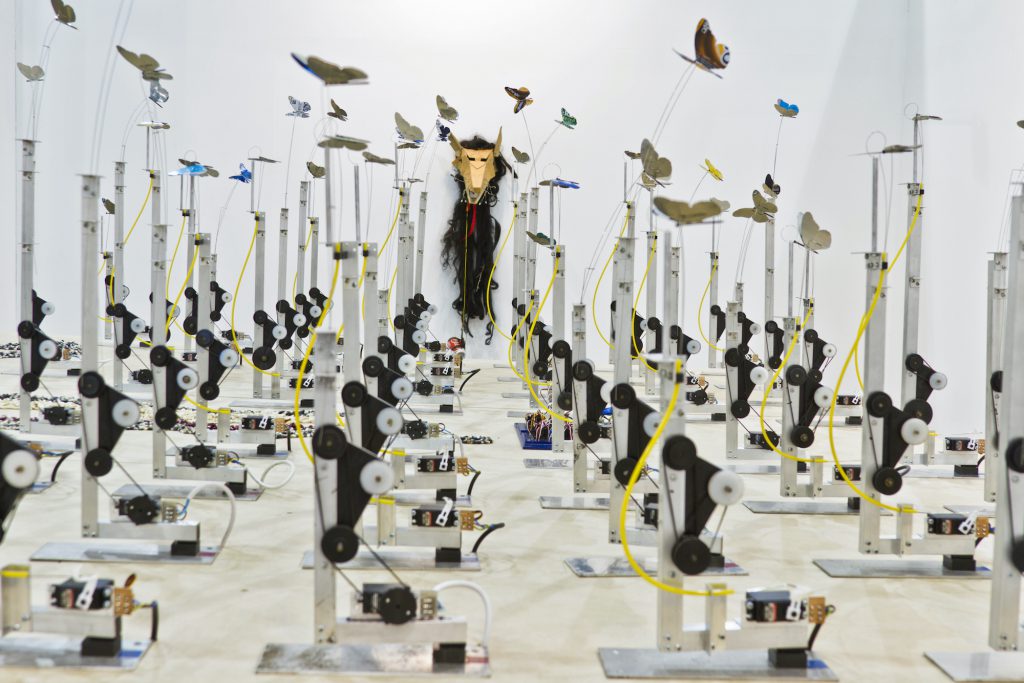
Fernando Palma Rodríguez, Tocihuapapalutzin, 2012, electronic control, servo motors, PIR sensors, electronic software, alumini- um, soft drink and beer tin can, courtesy of the artist and Gaga, Mexico City / Los Angeles
Fernando Palma Rodríguez, Tocihuapapalutzin, 2012, electronic control, servo motors, PIR sensors, electronic software, alumini- um, soft drink and beer tin can, courtesy of the artist and Gaga, Mexico City / Los Angeles

For Fernando Palma Rodríguez, the grammar of his native Nahuatl language, which distinguishes animate and inanimate nouns, inspires expansive conceptions of personhood. “When you speak Nahuatl, you have to acknowledge that all things in life—whether it’s a car, an airplane, a house, or an animal—are indeed people,” he said in a public presentation during his first visit to Gwangju in fall 2019. Trained as an engineer and artist, Palma Rodríguez’s work stems from his investment in the preservation of the environment and indigenous cultures with the nonprofit organization Calpulli Tecalco, which he co-founded and runs in Milpa Alta, Mexico, to revitalize traditional knowledge, language, gastronomy, and agriculture as forms of political resistance. The animating force behind his robotic representations of Mesoamerican goddesses, coyote-headed soldiers, and shamanic congregations is not only the mechanic assemblage of Arduino microcontrollers, servomotors, DC motors, and sensors but also the epistemic and ontological shift that situates their existence within indigenous cosmologies and Nahua ancestral knowledge.
In the work Toicnohuan (2021), two stone sculptures of coyote deities are placed at the intersection of north-south and east-west axes, indicated by four barrels that are rolled back and forth by mechanical buggy robots. After the exhibition, the stone sculpture produced in Mexico will remain in Korea, while the other, created by the Korean sculptor Han Rim Jeong, will return to the artist’s studio in Milpa Alta, completing a symbolic exchange of gifts between the two countries.
Composed of fifty-two mechanical butterflies, the work Tocihuapapalutzin (2012) expands Palma Rodríguez’s statement with a poetic and commanding invocation of the swarm intelligence of monarch butterflies. These insects complete an astounding migration cycle from the north of the American continent to Mexico over four generations and in the work, to quote Palma Rodríguez, symbolize prayers pleading “for the healing of our mind and acts, and the taking of responsibility for our actions, especially the dying of insects, birds, animals, and our own home—the world.”
Fernando Palma Rodríguez, Tocihuapapalutzin, 2012, electronic control, servo motors, PIR sensors, electronic software, alumini- um, soft drink and beer tin can, courtesy of the artist and Gaga, Mexico City / Los Angeles